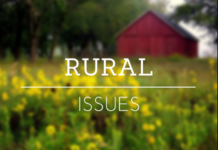LAWRENCE — For decades young people entering the teaching field have prepared for the career by taking classes and student teaching. A new book co-authored by a University of Kansas professor takes a look at how connecting pre-service teachers with at-risk youths and families can change their ideas of what it means to be an educator and, ultimately, make them better teachers.
“Community Fieldwork in Teacher Education: Theory and Practice” details the experiences of students who were enrolled in teacher education coursework with a program for homeless youths and families, with youths in foster homes and in a charter school. Their experiences highlight the value of approaching teacher preparation from a context outside of the traditional method.
“We spend quite a bit of time in class talking about the role of the teacher in a very traditional sense. We see this book as a counternarrative to the traditional model — the ‘apprenticeship of observation’ model — of how people often become teachers,” said Heidi Hallman, associate professor of education. “We highlight the stories of these beginning teachers in these unique roles working with homeless and foster youth, and we look at key things that happened in their experiences and how it may have been different from what they expected.”
Hallman co-authored the book with Melanie Burdick, assistant professor of English and director of composition at Washburn University. It was published by Routledge as part of the Research in Teacher Education series.
The pre-service teachers who took part in the project writing programs with at-risk youths did so through Hallman’s Methods of Teaching English class. The book details a five-year study and how the experience helped the future educators question what it means to be a teacher. Perhaps most importantly, the pre-service teachers quickly learned that curriculum is not something that is constrained completely to school. Youths’ experience outside of school, whether it be reading assignments, using social media or other daily activities, all play a factor in how they learn at school.
Learners who have extra challenges such as homelessness or growing up in foster care will assuredly approach school curriculum differently than their peers, Hallman said, and directly realizing that helps educators avoid the idea that all students can be taught in the same manner.
The book also details how community fieldwork can help young teachers realize the role they play in students’ lives in addition to being an educator. Many young teachers say they don’t feel like they are an authority figure until they have taught for several years or that they haven’t earned such a role. Beginning teachers who worked with at-risk youths realized that, even by serving in a tutoring role, they were looked up to by youths, that they could be effective authority figures and that such a role goes beyond discipline. They also realized that students in at-risk settings could not simply be labeled as troublemakers, disadvantaged or unintelligent, but that they were young people with their own unique hopes, dreams and styles of learning.
Current discussions in teacher preparation often state that teachers need to be educated in new ways to deal with challenges that educators of the past didn’t have to consider. Hallman and Burdick’s book outlines concrete ways teacher preparation programs can incorporate community fieldwork, often labeled as service learning, as a way to ensure teachers are ready to enter a challenging, but supremely important, profession.
“We saw the need for a more comprehensive view of how this could be done in teacher preparation programs like our own,” Hallman said of the impetus for the book.
The text can be beneficial both for teacher educators and beginning teachers looking to be effective educators with an open-minded view of how they can positively influence students inside and outside of the classroom. Too often people have the idea that teachers can hone a set of skills, often referred to as a “toolkit,” that will enable them to be successful teachers in any setting.
“I’ve always been interested in having teachers consider things other than just the mainstream,” Hallman said. “Teaching is about how you can use your knowledge in different settings with different kinds of youth. I think the greatest benefit of community fieldwork has been an increase in the understanding of context in teaching and pushing back against the myth of the toolkit, or a one-size-fits-all approach.”




